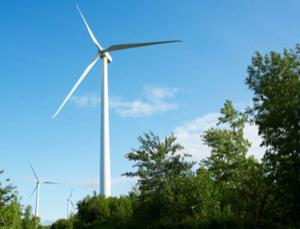 Could a greener world be bad news for green energy? Wind speeds are falling across much of the northern hemisphere, and this could mean less electricity is available from wind turbines. An increase in the amount of vegetation may be to blame.
Could a greener world be bad news for green energy? Wind speeds are falling across much of the northern hemisphere, and this could mean less electricity is available from wind turbines. An increase in the amount of vegetation may be to blame.
Robert Vautard at the Laboratory of Climate and Environmental Sciences (LSCE) in Gif-sur-Yvette, France, and colleagues analysed surface wind speed data from 822 sites around the world, covering the last 30 years.
Could a greener world be bad news for green energy? Wind speeds are falling across much of the northern hemisphere, and this could mean less electricity is available from wind turbines. An increase in the amount of vegetation may be to blame.
Robert Vautard at the Laboratory of Climate and Environmental Sciences (LSCE) in Gif-sur-Yvette, France, and colleagues analysed surface wind speed data from 822 sites around the world, covering the last 30 years.
They found that surface wind speeds have declined by 5 to 15 per cent across much of the northern hemisphere over this period. The slowing has been more marked for winds of over 10 metres per second than for lighter winds.
When Vautard and his team modelled the effect of vegetation increases across Europe and Asia over the period, they found this could explain most of the drop-off. "Large parts of Earth are becoming greener, partly due to efforts in Europe to maintain forests," says Jean-Noel Thépaut of the European Centre for Medium-Range Weather Forecasts in Reading, UK, who took part in the research.
Power loss
Wind turbines operate most efficiently when winds are stronger, so a continuing decline in the highest surface wind speeds would lead to a significant drop in wind power production, the researchers say.
However, Lars Christian Christiansen, a vice-president at wind turbine developer Vestas, based in Randers, Denmark, says the company's own research has not shown a clear correlation between changes in surface conditions and the wind speed at mast heights.
The measurement stations from which the researchers obtained their data are around 10 metres above the ground, while Vestas's 3-megawatt turbines are 130 metres high. "We don't believe these changes will affect the wind business," Christiansen says.
Vautard's team plans to test that assertion. Preliminary work comparing historical data on wind speeds close to the surface with wind speeds at a height of 1.5 kilometres suggests there may be a correlation. "If we correlate what we see at 10 metres with the winds at 100 metres, it is certainly a possibility that energy generation could be affected," Thépaut says.
Waves are also generated by the wind, so will the lower wind speeds reported by Vautard and his team damage the prospects for wave power? Ross Henderson, engineering manager for research and development at Pelamis Wave Power in Edinburgh, UK, argues that they will not.
There is no evidence that wind speeds over the sea have been falling, Henderson says. "While the data does appear to show a negative trend over the northern hemisphere land surface winds, it does not appear to show such a trend in atmospheric winds or over the oceans where waves are generated."

 Previous page
Previous page Back to top
Back to top







